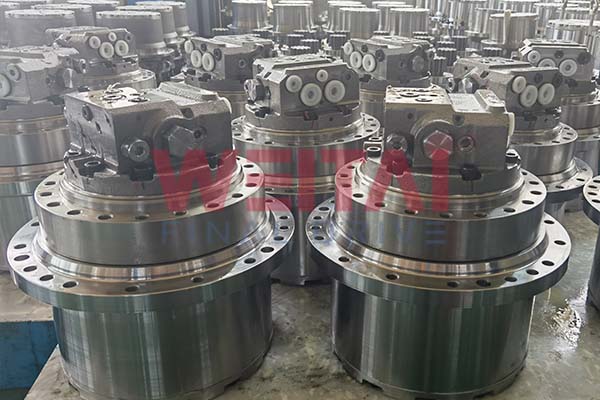Final drive motors are essential components in heavy machinery, providing the power necessary for mobility and performance. Over the years, these motors have undergone significant transformations, evolving from simple mechanical systems to sophisticated hydraulic solutions. In this blog post, we’ll explore the evolution of final drive motors, highlighting key advancements and their impact on efficiency and productivity in the construction and industrial sectors.

The Early Days: Mechanical Final Drive Motors
In the early stages of heavy machinery development, final drive motors relied primarily on mechanical systems. These motors used a combination of gears, chains, and pulleys to transfer power from the engine to the wheels or tracks.
Characteristics of Mechanical Final Drive Motors
- Simplicity: The mechanical design was straightforward, with fewer components making it easier to manufacture and maintain.
- Limited Power Output: While effective for smaller machines, mechanical systems struggled to provide the high torque required for larger equipment, limiting their application in more demanding tasks.
- Wear and Tear: Mechanical components were prone to wear, requiring frequent maintenance and replacement of parts, which increased downtime.
Despite their limitations, mechanical final drive motors laid the groundwork for future innovations in power transmission.
The Shift to Hydraulic Systems
As machinery became more complex and demanding, the need for more powerful and efficient solutions led to the introduction of hydraulic final drive motors. These motors utilize hydraulic fluid to generate power, enabling them to deliver higher torque and efficiency than their mechanical predecessors.
Key Advancements with Hydraulic Final Drive Motors
- Increased Power Density: Hydraulic motors can produce significantly more torque relative to their size, making them ideal for heavy machinery applications like excavators and bulldozers.
- Smooth Operation: The fluid dynamics in hydraulic systems provide smoother and more controlled operation, reducing the risk of sudden movements that could damage equipment or hinder performance.
- Reduced Maintenance: With fewer moving parts and less mechanical wear, hydraulic final drive motors require less frequent maintenance, translating to lower operational costs and less downtime.
This shift not only improved performance but also allowed for the development of more sophisticated machinery capable of handling complex tasks.
The Rise of Advanced Hydraulic Technologies
With the adoption of hydraulic final drive motors came further advancements in technology. The integration of electronic controls and advanced hydraulic systems has significantly enhanced the efficiency and functionality of these motors.
Innovations in Hydraulic Final Drive Motors
- Variable Displacement Pumps: These pumps allow for precise control over fluid flow and pressure, enabling operators to adjust power output based on specific task requirements. This adaptability improves fuel efficiency and overall machine performance.
- Closed-Loop Systems: Closed-loop hydraulic systems enhance efficiency by continuously monitoring and adjusting pressure and flow rates. This technology maximizes power delivery while minimizing energy loss, leading to improved operational efficiency.
- Integrated Control Systems: Modern hydraulic motors often feature integrated electronic controls that provide real-time feedback, allowing operators to make instant adjustments for optimal performance and efficiency.
These innovations have transformed hydraulic final drive motors into highly efficient, reliable components that power today’s most advanced construction and industrial machinery.
The Future of Final Drive Motors
As technology continues to evolve, the future of final drive motors is likely to see even more exciting advancements. Emerging trends include:
- Electric and Hybrid Systems: The push for more sustainable and energy-efficient solutions is leading to the development of electric and hybrid final drive motors. These systems promise to combine the benefits of hydraulic performance with the advantages of electric power.
- Smart Technology Integration: The incorporation of IoT (Internet of Things) technology and advanced sensors will enable predictive maintenance, allowing operators to anticipate issues before they become problems, further reducing downtime and maintenance costs.
- Enhanced Customization: As machinery becomes more specialized, manufacturers will likely offer more customizable final drive motor solutions, tailored to specific applications and operational requirements.
Conclusion: A Journey of Innovation
The evolution of final drive motors from mechanical systems to hydraulic efficiency has been a remarkable journey marked by innovation and advancement. Today’s hydraulic final drive motors deliver unparalleled power, efficiency, and reliability, making them indispensable in the construction and industrial sectors.
Understanding this evolution not only highlights the importance of these components but also sets the stage for future advancements that will continue to shape the industry. As we look forward to the next generation of final drive motors, one thing is clear: ongoing innovation will remain a driving force in enhancing machinery performance and efficiency.
Post time: Sep-20-2024
